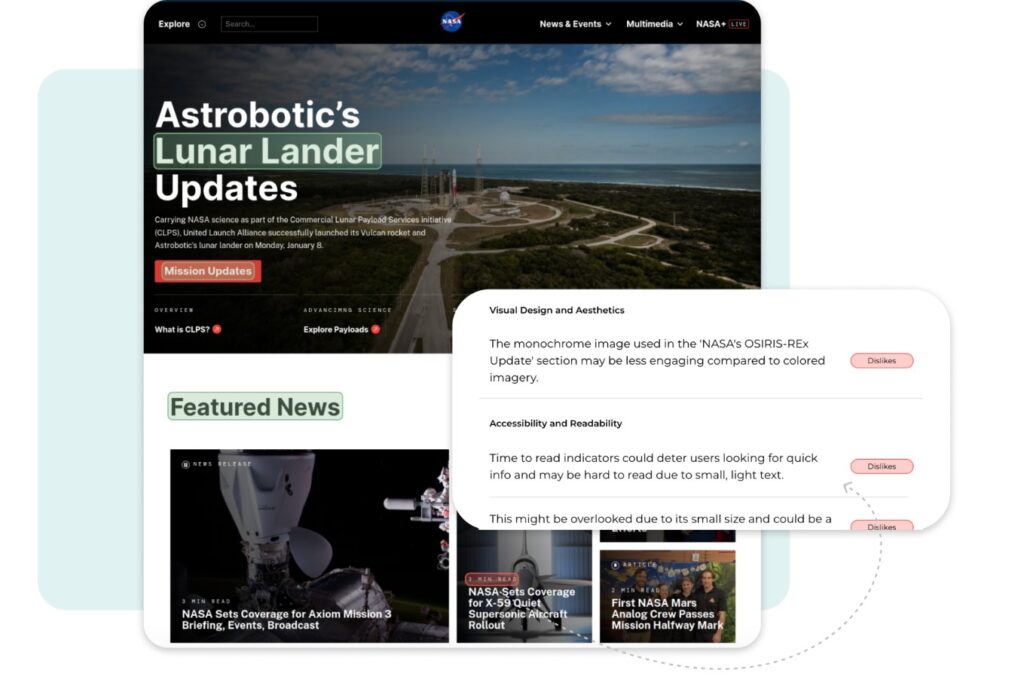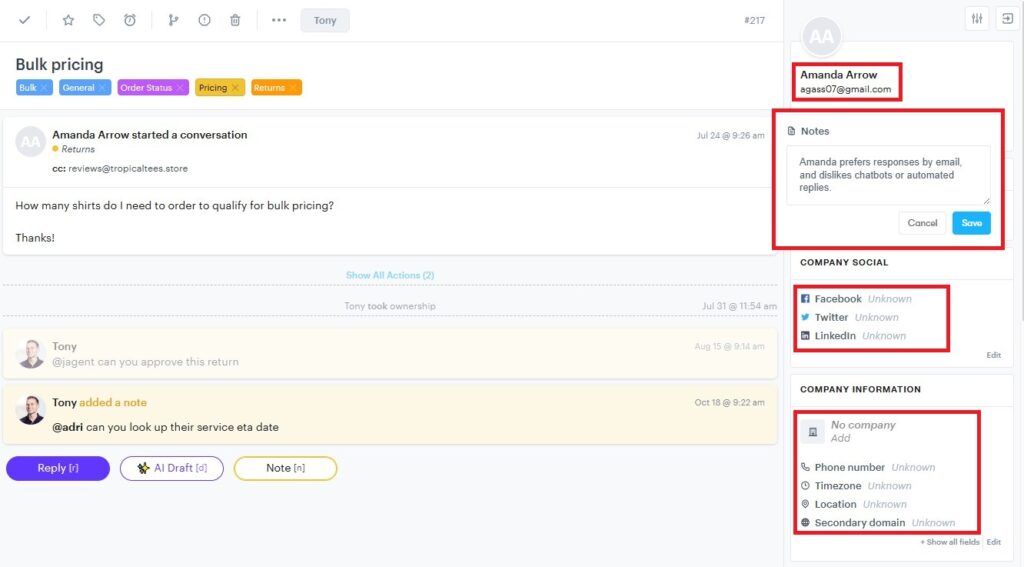Finding it difficult to determine how customers interact through your digital channels?
Maybe your buyers have a hard time moving from one channel to the next with your brand?
If your business fails to create a personalized experience across all channels, you’ll face low engagement rates, high bounce rates, and hampered customer satisfaction.
The solution? Creating a digital customer experience strategy aimed at specific improvements that increase customer lifetime value – yet remain achievable for your small business.
What Is the Digital Customer Experience?
At its most basic level, the “digital customer experience” refers to how people interact with your brand online.
So while it is applicable to B2C retail stores that have online websites for ordering, the digital experience is especially important for businesses that live and breathe online.
Digital touchpoints include apps, social media content, your brand’s website, and so on. The number of potential touchpoints is vast, so you’ll need to selectively prioritize.
Imagine that a customer is scrolling through their Instagram feed, and notices a promoted post for your shipping solution. They run a small ecommerce business and they click on the profile link, which directs them to a landing page for a 7-day free trial.
This kind of experience is often the first touchpoint customers have with your brand. But it won’t be the last.
What Digital Touchpoints Matter?
Think about all the places where customers engage with you online. If it’s hard to come up with a clear list, now is a good time to build customer journey maps, and track those customer journeys to see how they work in practice.
See the above links for more details. But in short, the ‘customer journey’ is how buyers move from the initial stages of awareness and consideration (should they buy X product based on Y need), to purchase and adoption (through checkout or subscription as they begin to use your product), all the way through retention and loyalty.
Each stage involves many touchpoints. Once you have a clear picture of the journey as a whole, you can focus on the most influential digital interactions.
In particular, don’t overlook the actions customers take proactively throughout their journeys. Google searches are a key touchpoint. But if content isn’t a focus for your brand, it can be easy to neglect SEO.
When potential customers come across your brand, do they see positive reviews? Are you buried underneath pages of results, or on the first page? Is there a website and contact information so they can reach you from the search results?
If you’d like a starting point, here are some of the most common digital touchpoints:
- Website — including dedicated landing pages
- Online ads — on social media, in search engines, etc.
- Live chat — AI agents, chatbots, and human support teams
- Social media channels — influencer content, organic and sponsored posts
- Blog posts — and other informational/educational content
- Email campaigns — promotional material and newsletters
- Customer support interactions — via email, chat widget, and social media
- Product reviews — included in surveys, and via third-party review sites
All these little factors influence CX. Developing your digital customer experience strategy is a way to control or at least guide those factors as much as possible. And you don’t necessarily need a separate customer experience team to accomplish your goals.
The Fundamentals of Quality Digital CX
What are the core components of a good digital experience?
Your own personal experiences are a useful tool here. Think about all the interactions you’ve had online with other businesses. These are a perfect source of inspiration, allowing you to view CX from the customer perspective.
Have you recently purchased from an online retailer with a sleek, aesthetically pleasing, and easy-to-use website? What can you learn from its UI, navigation tools, and purchase process?
What are you looking for? There are three main components of the digital customer experience: customer success, customer effort, and customer emotion:
- Customer Success = Business Success. Did the customer achieve what they set out to do? Did they find a product/service that meets their needs? When the customer succeeds with your product (and your brand as a whole), they’re more likely to stick around long-term – and maybe even become advocates.
- Customer Effort = Accessibility and Ease of Use. Metrics like Customer Effort Score (CES) help you collect quantitative and qualitative feedback on the experience of using your product/service. You’ll want to reduce the amount of effort required to purchase, onboard, and adopt successfully.
- Customer Emotion = Satisfaction with the Online Experience. Quality digital CX should delight customers and encourage them to return. Did the customer walk away from an interaction happy with their decision, or did it lead to post-purchase regret?
How To Develop Your Digital Customer Experience Strategy (3 Tips for Success)
The ultimate goal of any digital customer experience strategy is to improve Customer Lifetime Value (CLV) and growth, by acting on the insights you receive from data and feedback.
How can you use this information to develop an effective plan of action?
Tip #1: Conduct a Digital CX Audit of Your Current Website
Modern online shoppers want immediacy. So our first tip involves conducting a digital CX audit to assess weak points, friction, or gaps within your website’s functionality.

There’s some great reference material out there that can guide you through this process. We’d suggest starting with:
- Basic usability factors. Does the website appear professional? Is the navigation clear? Has it been optimized for performance?
- Lead education and nurturing. Your website should teach visitors about your brand. They’re looking for information that tells them whether they should buy or not. Is it clear what you offer, and what the key features/benefits are? Is other important information, such as pricing, readily available?
- How interactions connect into a ‘digital touchpoint chain’. If someone arrives via a landing page (after clicking on a Google result), are there clear next steps? Are they led from one part of the journey to another, or left to fend for themselves?
- Existing customer touchpoints. Your website is most important for lead/conversion generation. But existing buyers will have reason to visit it too. Are the touchpoints that matter to them polished – such as self-service and customer support?
If this sounds daunting, you can leverage website audit tools that do the heavy lifting for you. There are lots of free (or at least reasonably affordable) solutions in this category, such as:
- WEVO Pulse, which leverages data from research participants to show how audience personas will respond to your website. It also provides insight into user sessions, to show you where and when users might encounter technical problems.
- LogRocket is a session replay tool that tracks user sessions on your website, showing you exactly what customers see and do. It captures errors in real time, linking them to a session replay for context.
Any resource that can track website performance issues will help you identify and fix UX problems. Don’t feel like you have to change everything at once. Incremental, targeted improvements add up over time.
Tip #2: Prioritize an Omnichannel Experience
McKinsey defines omnichannel as “the path to value”, and a “requirement for survival”. And we agree wholeheartedly.
The vast majority of customer journeys with your brand will involve at least a few different channels, platforms, tools, etc. All of this needs to be consistent and work together smoothly. Transitioning from one to the next needs to feel natural, not disjointed.
This is an excellent way to differentiate yourself as a small business, especially if you’re in a crowded niche. Despite the importance of an omnichannel approach, few businesses really provide it.
Discrepancies exist between retail stores and online experiences. Or in the case of SaaS, customer support is not readily accessible across channels. A customer who reaches out via Instagram DM has to re-explain their problem when they call live support.
Providing Omnichannel Customer Support
The foundation of any strong omnichannel experience is integration. The more you can bring disparate channels together, the better you can unify and switch between them.
Nowhere is this most important than in customer support. You probably offer a number of service channels, not to mention the ‘informal’ ones like social media. If buyers receive different experiences on different platforms, or have to keep re-explaining their problems, the digital CX suffers.
In other words, customers should be able to seamlessly switch between social media interactions, chatbot queries, and email support, all without missing a beat.
Groove – our customer service help desk for small businesses – makes omnichannel support easy. As a result, it prevents all kinds of potential friction in the digital customer experience.
With Groove, you funnel all your digital communication channels into one shared inbox. This means:
- Improved consistency. With all messages in one place, your team can reply to them using standardized branding, voice, and workflows.

- Synced customer profiles. Customizable profiles allows you to meet expectations for personalized service. Even when a buyer switches channels or connects with a new agent, all of their previous details and inquiries are collected as reference.
- Streamlined training. Agents usually learn to respond to and handle different communication channels separately. This requires extensive training to maintain a consistent experience. Using one platform for everything customer support makes training simpler, helps agents adhere to your brand’s standards, and eases changes/transitions.
Tip #3: Make Yourself Available 24/7 for Your Customers
More businesses are shifting away from the idea of customer “service”, and transitioning to a focus on customer “experience”. The latter is all about going above and beyond at all times – and that means 24/7 support via multiple channels.
This level of service:
- Improves customer retention. If you can proactively resolve frustrations (or prevent them), you keep customers from looking around for alternatives.
- Provides a competitive advantage. One survey from Salesforce found that 77% of customers expect an immediate response when they contact a company. Plenty of other research affirms that finding. Yet there are few companies that offer true 24/7 support.
- Allows for a wider audience. If you want your business to transcend locality and reach people on a global scale, you’ll need to account for time zone differences. This is a major pain point for startups in SaaS or tech, as they often need to provide assistance to customers across the country — no matter the time of day.
As a small business, implementing round-the-clock care can seem either unaffordable or inaccessible. Your ‘support agents’ probably have other roles too, and only so much time to spend answering inquiries.
That means you’ll need to rely on tools to make 24/7 support more realistic.
Leveraging Groove To Provide ‘Always On’ Customer Support
A help desk like Groove makes it much easier to provide always-available support. How? Through self-service resources, live chat functionality, and inbox automation.
Rules allow you to automate ticket sorting and assignment, and create pre-scheduled messages. You can use rules to send automated replies when no one is available, pointing customers to other service options, as well as quick replies to general inquiries.
There are plenty of pre-made templates to get you started. You can also build custom rules based around your customers and workflows:
One of the best ways to provide 24/7 support is to offer ‘self-service’ resources. In other words, give customers the tools to solve their own problems when you’re not around (or are backed up).
A comprehensive knowledge base is a great starting point. You can fill it with all kinds of information, guides, and tutorials for people to peruse on their own time:
We also recommend incorporating AI into your live chat support. Our companion product, Helply, is a 24/7 AI agent that resolves up to 70% of Tier-1 support questions.
It’s more advanced than a chatbot, and uses learning technology to crawl your previous inbox replies, documentation, and knowledge base articles. AI isn’t a replacement for human support agents, but is great for providing basic help when your team can’t (and taking rote inquiries off their plates entirely).
Making Support a Focal Point for Your Digital Customer Experience Strategy
So many conversion and retention failures come down to a poorly-optimized digital customer experience. Something in your website’s UI turns people away, or disparities between how your brand is presented on social media vs landing pages creates confusion. The list goes on.
An active understanding of your customers across digital touchpoints help you determine exactly where they’re getting stuck. That starting point is essential for creating a true strategy, rather than a series of reactive experiments.
Fortunately, you don’t have to do it all alone or from scratch. Groove is a feature-rich, affordable help desk that enables high-quality CX. Its curated features let you improve every touchpoint related to online support – plus it’s simple to learn and highly affordable.
Sign up for a free 7-day trial of Groove, and build a truly successful digital customer experience strategy on the foundation it provides!



